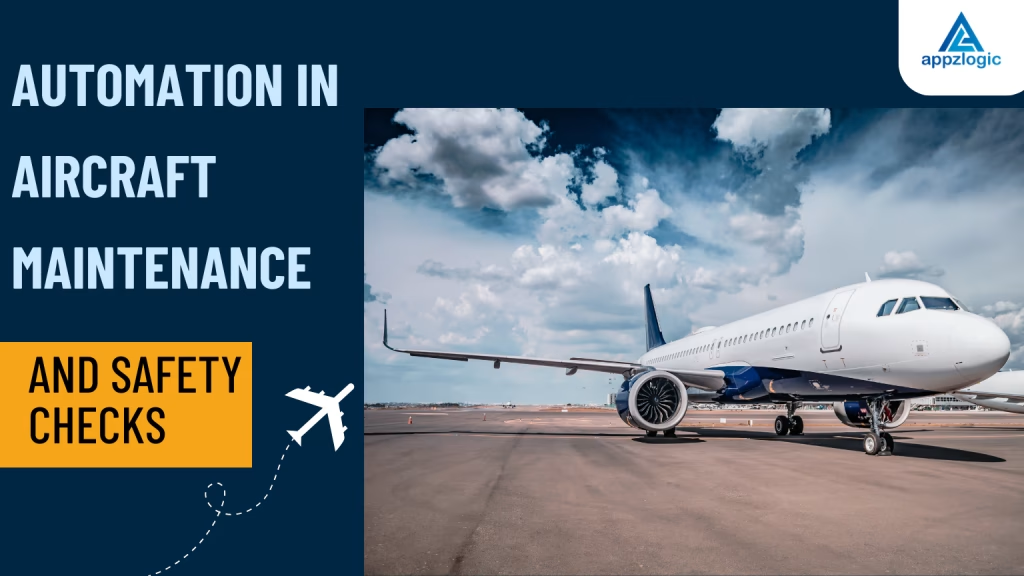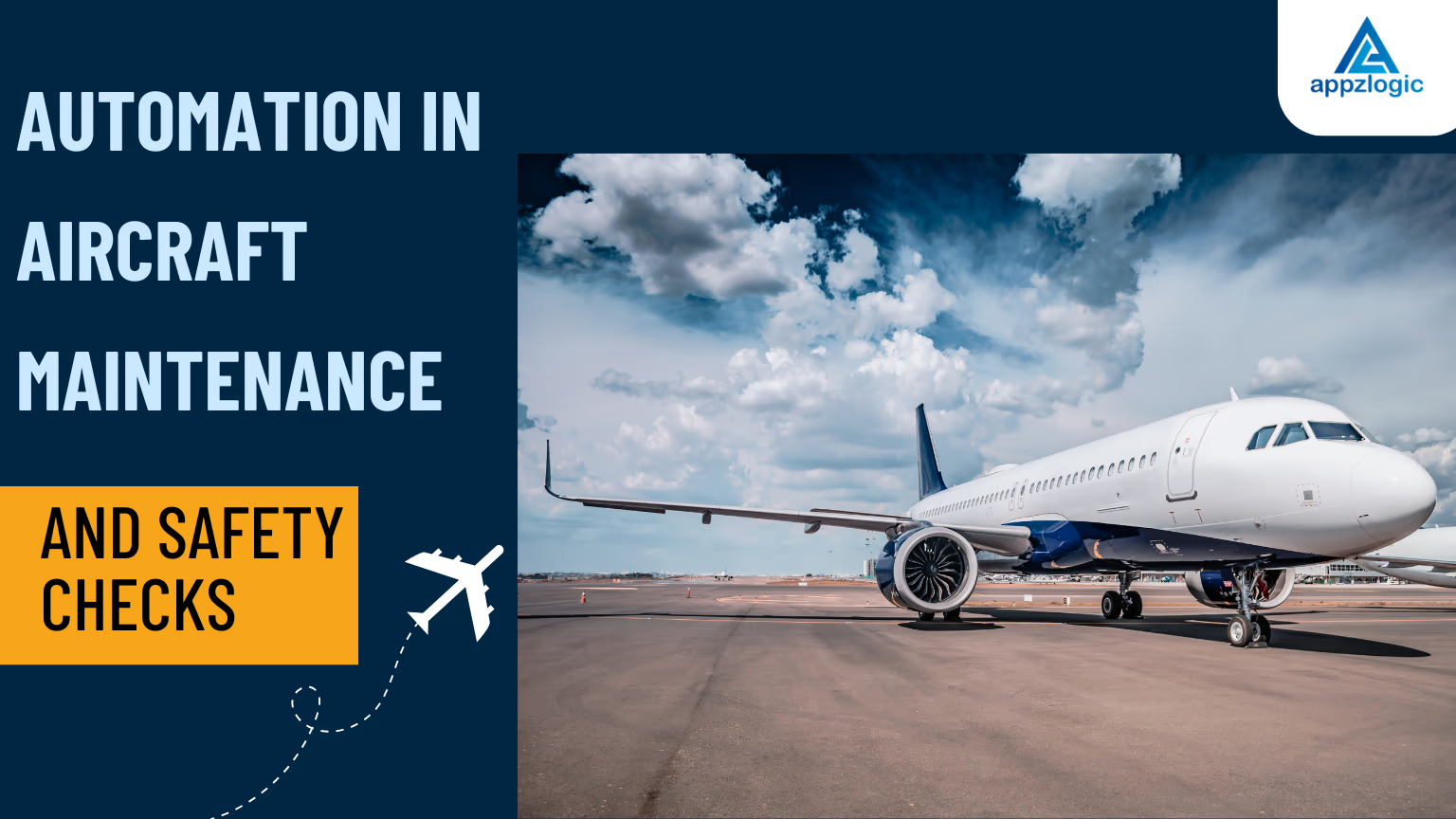
Automation in Aircraft Maintenance and Safety Checks
Airplane maintenance needs constant care to stay safe. Behind every flight is a long list of checks and fixes to make sure everything is working properly. In recent years, automation in aircraft maintenance and safety checks has become a key part of this process. It helps airlines carry out inspections, repairs, and safety steps more quickly and with better results.
Maintenance checks are essential for keeping aircraft operational, but they often lead to flight delays and increased operating costs. To address this, aviation companies are turning to automated aircraft inspections to reduce downtime, optimize task planning, and improve parts management.
Use of Automation in Aviation

The use of automation in aviation has changed the way aircraft are maintained and monitored. Earlier, many tasks had to be done manually. Now, advanced systems help staff check engines, parts, and systems more easily.
Modern airplanes come with sensors that collect large amounts of data during every flight. These sensors monitor temperature, speed, vibration, and pressure in different parts of the plane. The collected data helps engineers find issues before they turn into serious problems.
Digital Tools for Smart Maintenance
One of the major improvements brought by automation is predictive maintenance. This means airlines no longer wait for parts to break. Instead, they fix or replace them before any damage occurs. Digital systems track the condition of parts in real-time. They analyze patterns and compare them with previous data to suggest when maintenance is needed. This way, airlines reduce costs and avoid delays.
Automation in Aviation Industry
Across the aviation industry, automation is becoming part of daily operations. It is used not just in maintaining aircraft, but also in managing ground services, cargo handling, and even passenger check-ins. In aircraft servicing, robotic arms and automated scanners are used to inspect surfaces for cracks or dents. These machines do the job faster and more accurately than the human eye.
Airports also benefit from automation. Ground control systems now use smart software to move planes safely between gates and runways. Luggage handling is more accurate, and fueling operations are monitored by automated tools that reduce risks.
Robotic Inspections and Drones

Robots and drones are now part of regular inspection tasks. Drones fly around the aircraft, scanning areas that are difficult to reach. They take high-quality pictures and videos of the wings, engines, and tail.
This helps identify even the smallest cracks, dents, or oil leaks. Unlike traditional methods that require scaffolding or ladders, drones save time and remove danger for workers.
Robotic arms are used in engine repair shops. They perform cleaning, polishing, or even welding with great accuracy. These robots do repetitive tasks consistently, freeing up human workers for more complex tasks.
Advantages of Automation in Aviation
The advantages of automation in aviation are easy to see. One of the most important is safety. Machines do not get tired or distracted. They follow the same process every time, which ensures that checks are done properly.
Another benefit is time savings. Many tasks that used to take hours now take only minutes. As a result, planes spend less time on the ground and more time flying, which means more revenue for airlines and fewer delays for travelers.
Automation also helps with cost control. By reducing surprise breakdowns, airlines avoid expensive emergency repairs. They also save money by using fuel more efficiently and managing spare parts better.
Improved Accuracy and Less Human Error
Even the most experienced technician can make a mistake, especially during long shifts or in harsh weather. Automation reduces this risk by ensuring every check is done the same way every time.
Digital systems do not miss out on the steps. They follow exact instructions and flag anything that looks unusual. This helps in catching issues early and avoiding problems later.
Accuracy is also important when ordering replacement parts or recording maintenance history. Automated systems keep clear records that can be accessed anytime.
Cybersecurity in Aviation

It is critical to ensure the safety and reliability of modern aircraft systems and airport infrastructure. With increasing digitization, from flight control systems to passenger data management, the aviation industry faces growing threats from cyberattacks. Protecting communication networks, onboard software, and ground operations from breaches is essential to prevent disruptions, data theft, and potential safety risks. As a result, airlines and aviation authorities are investing heavily in advanced cybersecurity measures, real-time monitoring, and international cooperation to safeguard the skies.
Airplane Automation
Airplane automation refers to the smart systems installed on modern planes. These systems help during takeoff, cruise, and landing. Most people know about autopilot, but now planes have far more advanced tools.
Modern aircraft can manage speed, altitude, and direction with very little input from the pilot. They receive real-time updates from satellites and other aircraft. These updates help the plane adjust its route to avoid storms or busy airspace.
This kind of automation improves safety and saves fuel. It also reduces the workload on pilots, allowing them to focus on what really matters: communication, decision-making, and passenger comfort.
Read More about: How Airlines Use Data and AI to Prevent Aircraft Failures and Reduce Delays
Automated Ground Support Systems

Airplane automation does not end when the plane lands. Once on the ground, it connects to smart systems at the airport. These systems guide the plane to its gate, manage refueling, and track passenger luggage.
Smart fueling tools ensure that the right amount of fuel is loaded based on the flight distance and weather. This helps reduce waste and ensures the plane remains within the weight limits.
Automated check-in systems also help passengers get on board faster. These tools reduce waiting times and improve the entire travel experience.
Future of Automation in Aviation
The future of automation in aviation looks bright. With every passing year, more tools and systems are introduced to make flying even safer and more efficient.
New planes are being designed with built-in diagnostics. This means they can report problems while still in the air, allowing the ground team to prepare before the plane even lands.
Artificial Intelligence (AI) will also play a larger role. It will help make smarter decisions about flight paths, fuel use, and repair plans. This will lead to even better safety records and smoother travel for everyone.
Conclusion
Automation in aircraft maintenance and safety checks has changed the way airlines operate. It brings speed, accuracy, and reliability to an industry where safety matters most. By using sensors, smart software, drones, and robots, airlines can now take care of their planes faster and with better results. Automation also supports pilots, improves airport operations, and creates a better travel experience for passengers.
Frequently Asked Questions
Automation helps detect problems early, schedule timely repairs, and perform checks with better accuracy. This keeps planes in top condition and reduces delays.
Yes, drones are safe and effective. They can access difficult spots without the need for ladders or lifts, making inspections quicker and safer.
Yes. Pilots remain in full control. Automation helps by managing routine tasks, so pilots can focus on important decisions.
Absolutely. By avoiding breakdowns, improving fuel use, and speeding up processes, automation helps airlines save money over time.
No. Many smaller airlines and regional airports are also adopting automated tools to improve safety and service.


